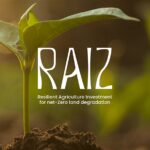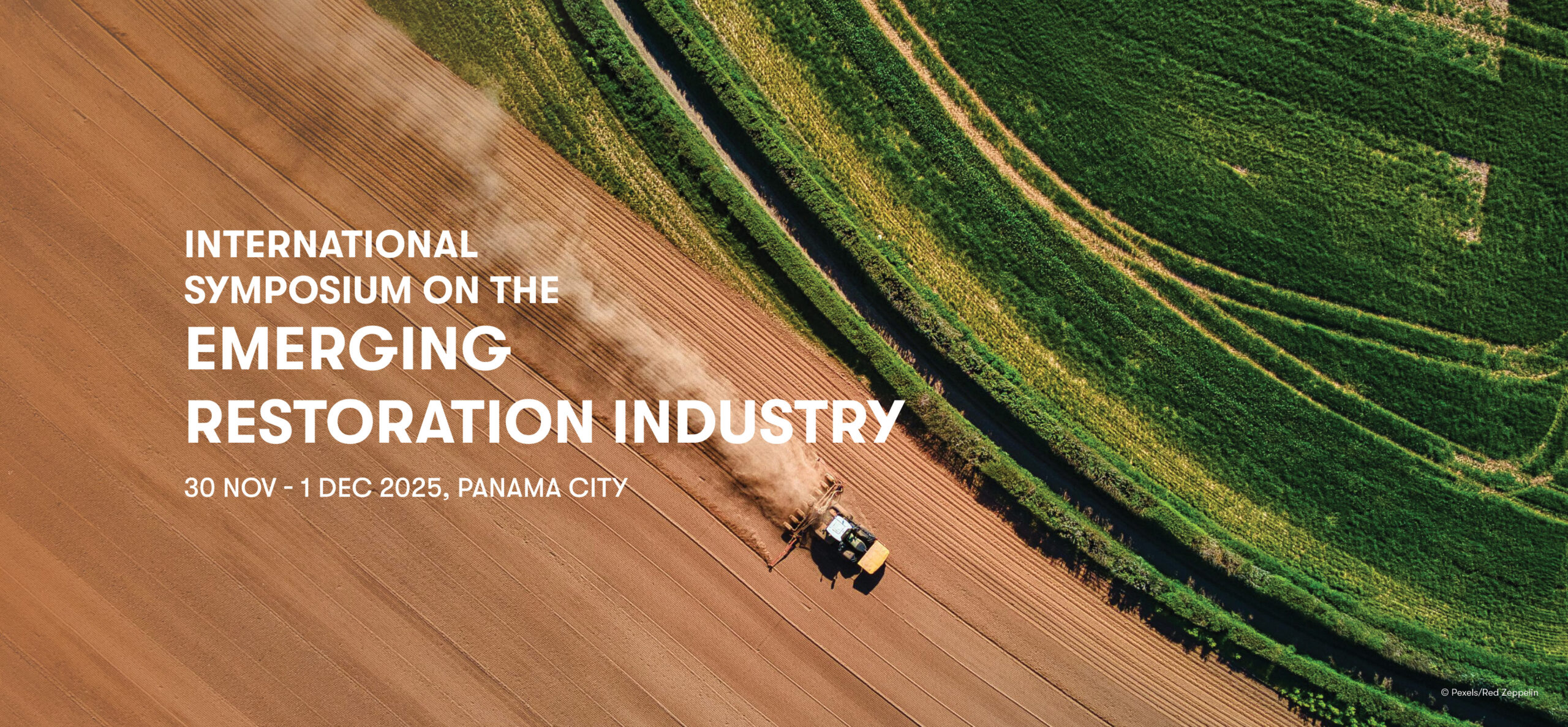An Urgent Call for Land and Spatial Planners to Champion Land Restoration

By Professor Iyenemi Ibimina Kakulu, Rivers State University, Nigeria
Land is a natural asset akin to other valuable national assets such as gold, minerals and infrastructure. They are a nation’s wealth. More than 130 governments around the world have pledged to restore one billion hectares of degraded land by 2030 to replenish this asset, which is one of the most powerful means of protecting society from the devastating effects of climate change.
Similarly, the world’s largest economies, the Group of Twenty (G20), which make up 75 per cent of global Gross Domestic Product, intend to put 50 per cent of degraded land back to health by 2040. G20 countries have collectively invested over 120 billion dollars in nature-based-solutions to secure their future (NBS). That is 92 per cent of all investments in NBS.
So why are land use and spatial planners, the custodians of this asset, not yet in this game? It is in our self-interest not only to join this movement. We should lead the change through targeted policies on land use planning, incentives that promote land use approaches to preserve the land’s productivity and value as well as to level the playing field for young people, women and other disenfranchised land users.
Land restoration safeguards our present and future career interests
Land and spatial planners are custodians of the land, who should play a crucial role in land restoration because it is the asset on which their livelihoods are built. They determine how land, as an asset, is allocated for use. They manage both the competing land-use needs of today, while safeguarding the future needs of both people and the planet.
Poor land use and spatial planning can lead to the loss of productive land. As the value of the primary asset that land planners manage declines, the long-term development of the land sector gets affected.
And as the land loses its value, through degradation in particular, it jeopardizes the livelihoods of the planners and their communities.
Globally, more than two billion hectares of land in the rural, peri-urban and urban areas are degraded. Today, over 70 percent of all terrestrial ecosystems have been altered through human use.
Degraded ecosystems are wastelands, with little to no value for land planners. It is a threat to their survival. By contrast, restoring the degrading lands expands the pie that planners can work with.
This is why the global commitments the international community has made to restore close to one billion hectares of degraded land should become the business of all land and spatial planners, not least, women and young people in this space.
Land restoration serves the interest of land planners. Yet, few of them have land restoration on their policy radars.
Within the realm of land use and spatial planning, professionals in the land industry also wield a lot of power. We shape land-use policies. We make decisions concerning land allocation. And we determine land use.
If we leveraged this influence, decision-making processes related to land use can be modified in favor of economic incentives that reward land users who promote the restoration and conservation efforts. In short, land professionals can apply targeted land-use planning to prevent, halt and even reverse land degradation.
The canker in the land industry
The land market and industry is built on an economic logic that has land ownership at its core. To this end, land professionals provide essential services. They identify land sites, delineate them and share advice on their use.
If land degradation continues unchecked, it is a threat to the survival of every industry built around the land asset because land degradation intensifies the use of the limited remaining land, and progresses in downward spiral.
The consequences of land degradation go beyond the economic. Biodiversity loss and land degradation are bedfellows that both impact various life forms. Land degradation is a grave threat to life on Earth because it is a catalyst for other environmental crises. Species loss. Hunger. Carbon release, and much more.
However, land degradation is not fated considering that land degradation seems to take different forms in different land use types. These differences are determined by the socioeconomic, socio-cultural and development contexts.
Inadequate standards and planning for soil removal in infrastructure projects
Land degradation is insidious, which may explain the inattention to it by land and spatial planners. Much like the tiny drops of water that collect to form vast oceans, land degradation goes relatively unnoticed until its severe impacts on people and animals become apparent. The causes of land degradation are well known and documented. What is less known is the significant role that ill-advised policy choices by planners play in land degradation.
Take urban infrastructure development, for instance, there is an allure for concrete expansions over the mangrove forests and wetlands that protect us from disasters. In urban areas, grassy lawns and footpaths often give way to concrete paving. These choices contribute to land degradation, but could be regulated by land and spatial planners.
Large scale development projects provide the best evidence of land degradation through land use planning. Infrastructure projects disrupt a critical life-supporting ecosystem service – topsoil. Inadequate planning and the lack of standardized procedures for the careful removal, preservation and reuse of topsoil are all too common.
Meeting housing needs and roads, for example, are legitimate and valid forms of land use. But construction sites churn up and discard significant volumes of topsoil, rapidly. But this is land degradation on steroids considering that one centimeter of topsoil takes hundreds of years to form.
A good planning policy could ensure all topsoil dredged from highly productive land is shipped to locations where it can increase productivity.
By embedding principles of land degradation and restoration into land use policy and planning, land practitioners can chart a new path toward sustainable urban land management, and ultimately halt and reverse land degradation.
Levelling the business environment through policy and land ownership
Building greater awareness of land degradation among land users is a good place for land industry professionals and practitioners to start the change. We interact with all land users. If we share and disseminate information about land degradation, we will make it visible and recognizable to all land users; from domestic to educational and industrial sectors.
We must be proactive and do more than taking the practical steps to tackle this issue within the land industry. We need to champion the restoration of the hectares pledged for restoration by promoting and supporting like-minded land users.
However, the effort required to change the land use narrative and to embark on the journey to land restoration is not one we can achieve alone. Professionals and practitioners in the land industry should work alongside a wide range of stakeholders, especially youth and women.
Land ownership, the turn-key
Land ownership is front and center in this respect. It holds the key to all land matters. For instance, transferring ownership of the land from a farmer to a construction company determines the fate of the topsoil on a piece of land.
That is why the role land ownership plays is so crucial. It motivates individuals to care for their property. This is also why massive land ownership by a privileged few is problematic. Inequality in land distribution can hinder thoughtful and responsible land use. Moreover, alienation from land ownership can also create disinterest in the future of land.
Social exclusion, based on identities such as gender, socioeconomic status or culture, can lead to apathy toward land degradation among the groups left out. This can become a major disincentive for land restoration at the global, societal and household levels.
Land professionals can promote inclusive land ownership and equitable land rights for youth, women and men alike. Implementing land ownership schemes that empower marginalized groups, such as youth and women who have limited access to land, can create a sense of responsibility over the land and motivate active participation in habitat conservation and land restoration. Restricting land ownership and use by gender or age is a form of self-sabotage in societies where a majority of the female and youth labor force work on the land.
The narrative around land ownership must evolve in a way that paves the way for more people to climb the ladder of land ownership . If there are more land owners, then there are more people to care about what happens to the land.
If land is viewed as an economic asset, then female and youth laborers should be viewed as potential job creators that can add value to the land economy and industry.
Bringing it together
Land use policies can be made inclusive by ensuring that land distribution and allocation empower all members of society, not a select few. They should promote equitable land ownership and ensure equal representation of all segments of society—men, women, and youth—when deliberating land-related matters.
Land practitioners can also play a crucial role in promoting sustainable land use and management practices. They can serve as drivers of land restoration projects, working hand-in-hand with their clients to ensure compliance and integrate land degradation considerations in the land development approval processes.
The urgent need to safeguard and restore our depleted land cannot be overstated. It requires concerted efforts from land professionals, practitioners and society as a whole. Countless opportunities exist for engaging with landowners and property developers to deliver the message of green and sustainable land use and construction. The time to act and collaborate is now. This is the time to leverage the power of the G20 to cut degraded land by a half in one generation.






